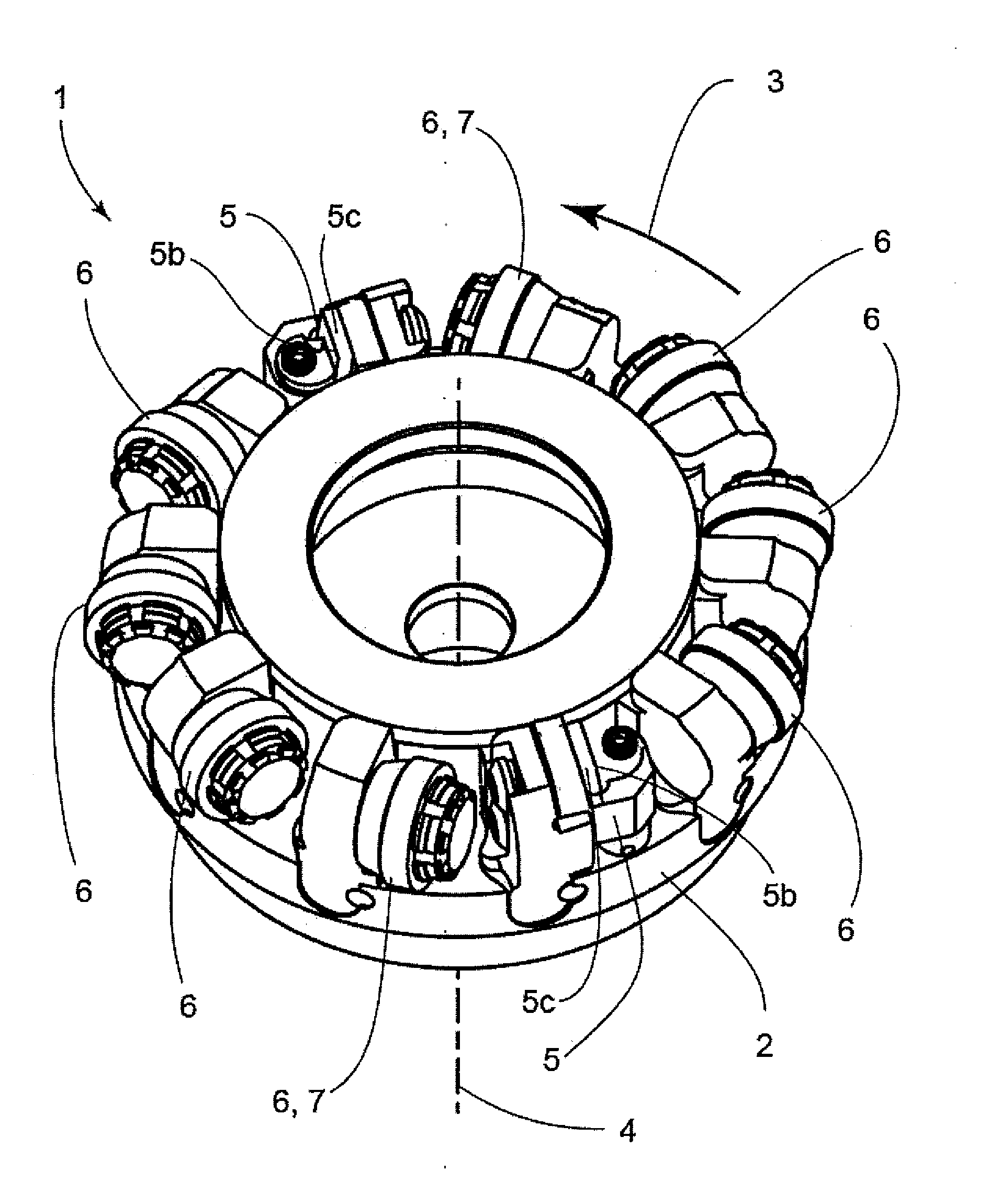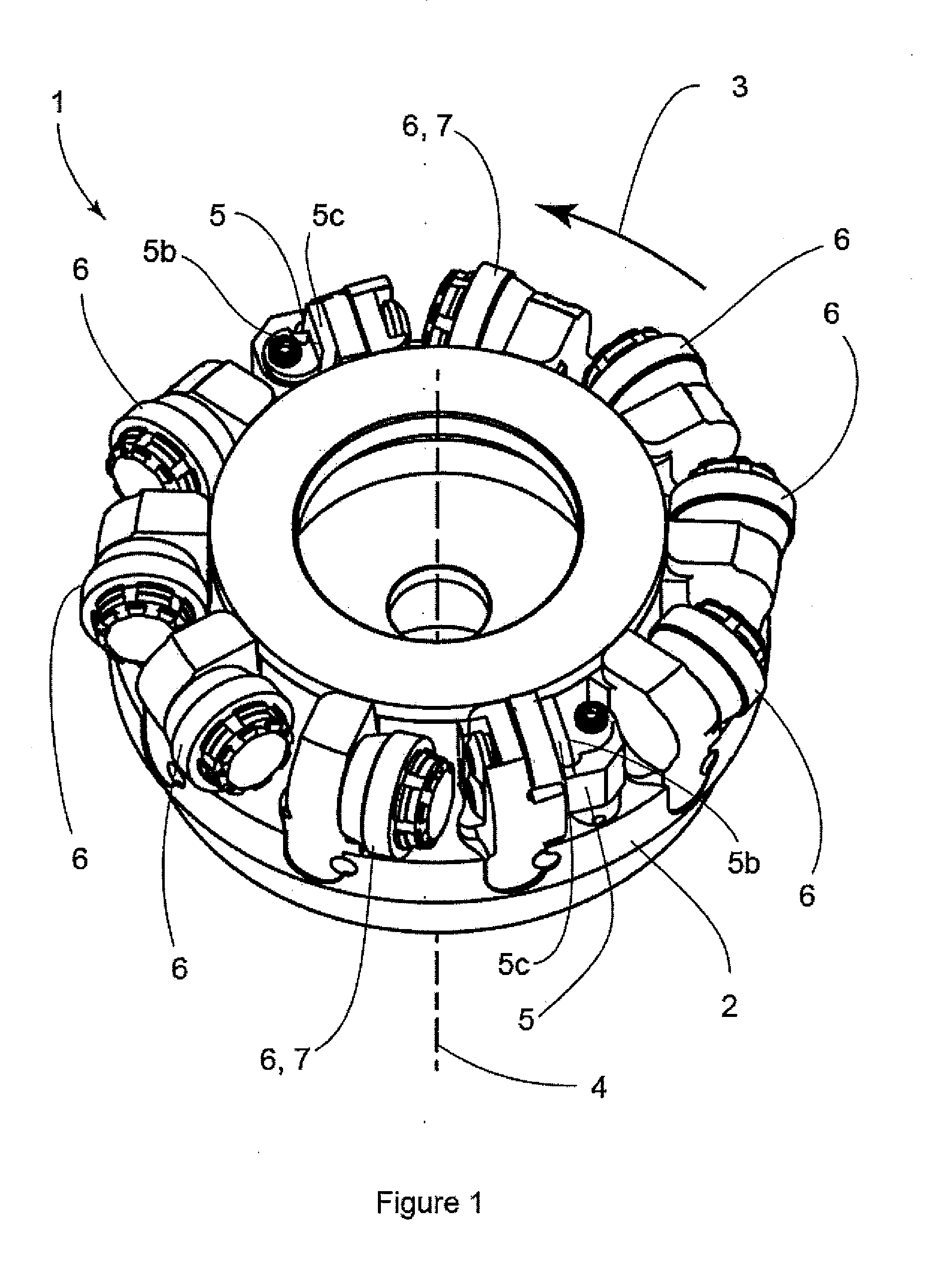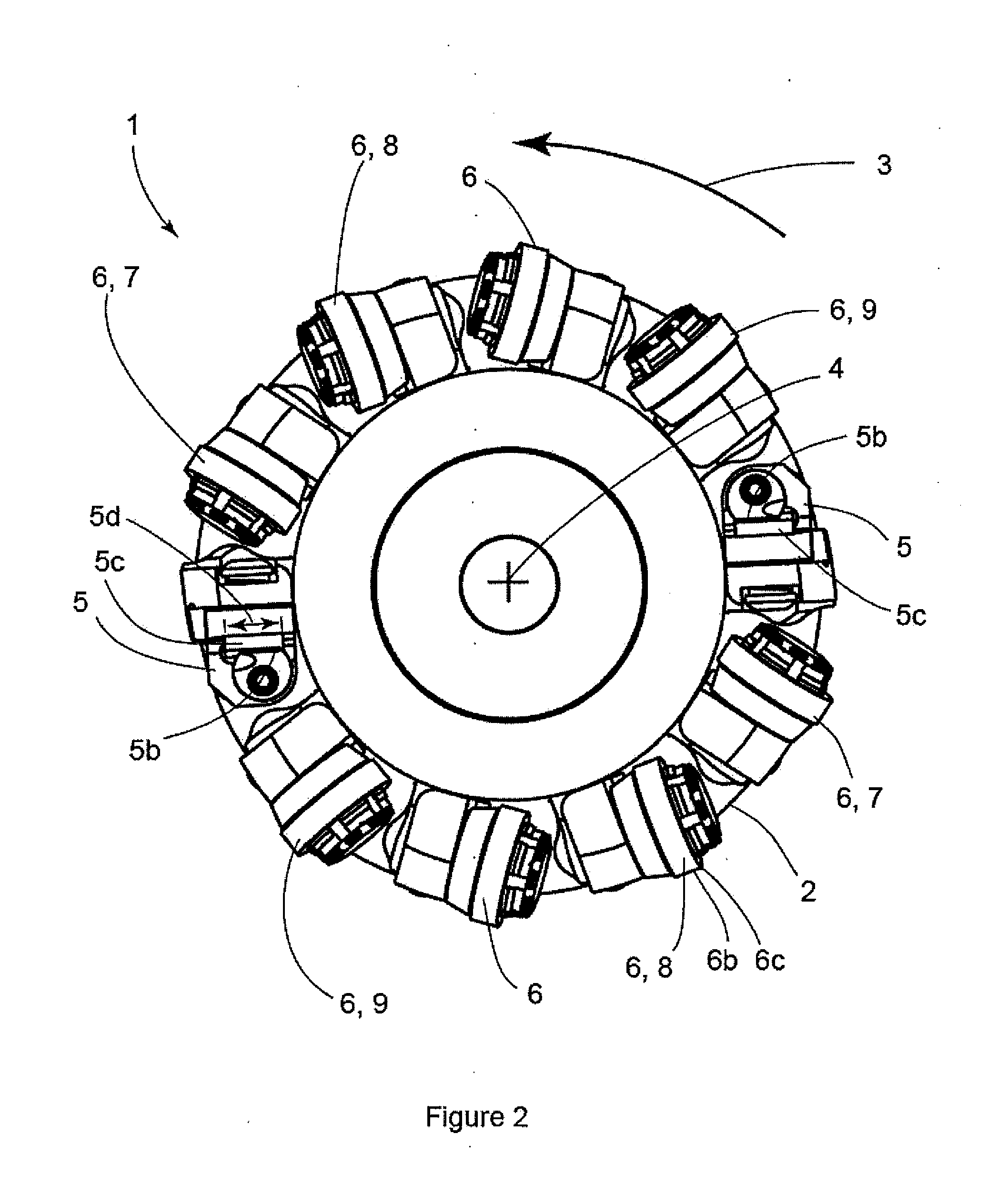Finishing face mill with reduced chip load variation and method of obtaining the same
a technology of chip load variation and face mill, which is applied in the direction of shaping cutters, metal working devices, manufacturing tools, etc., can solve the problems of dimensional error in the location of the face milled surface produced, large deleterious effect on surface roughness, and proportionate productivity drop
- Summary
- Abstract
- Description
- Claims
- Application Information
AI Technical Summary
Benefits of technology
Problems solved by technology
Method used
Image
Examples
Embodiment Construction
[0029]A finishing face mill 1 disclosed herein improves / decreases surface roughness. The present disclosure applies to any wiper-based finishing face mill, having a body 2 that is provided a rotating motion 3 about an axis 4 to provide a cutting motion, that incorporates, as shown in FIG. 1, its wiper teeth 5 (having cutting edge 5b) in place of primary cutting teeth 6 which results in a wiper-following primary cutting tooth 7, which is a primary cutting tooth that follows each replaced primary cutting tooth location where a wiper tooth has been placed, experiencing double the nominal chip load, fz, where fz=fn / zn, where fn is the feed per revolution and zn is the number of tooth locations on the cutter. It is described here with the assumption that tooth locations are evenly spaced circumferentially / angularly. Some face milling cutters have some departure from even spacing as a means of interrupting vibration regeneration that leads to instability and chatter, hence increasing the ...
PUM
| Property | Measurement | Unit |
|---|---|---|
| Length | aaaaa | aaaaa |
Abstract
Description
Claims
Application Information
 Login to View More
Login to View More - R&D
- Intellectual Property
- Life Sciences
- Materials
- Tech Scout
- Unparalleled Data Quality
- Higher Quality Content
- 60% Fewer Hallucinations
Browse by: Latest US Patents, China's latest patents, Technical Efficacy Thesaurus, Application Domain, Technology Topic, Popular Technical Reports.
© 2025 PatSnap. All rights reserved.Legal|Privacy policy|Modern Slavery Act Transparency Statement|Sitemap|About US| Contact US: help@patsnap.com



